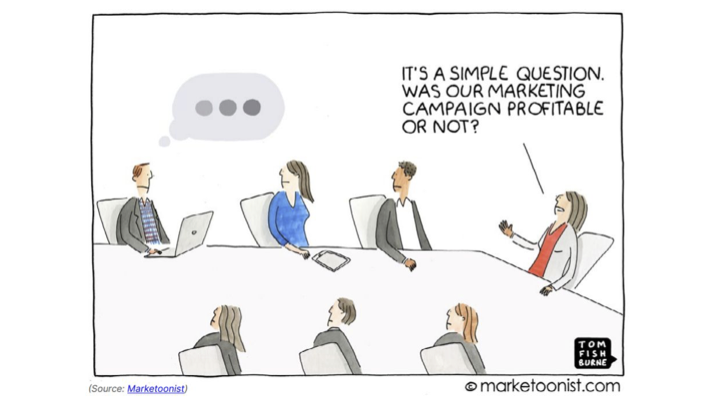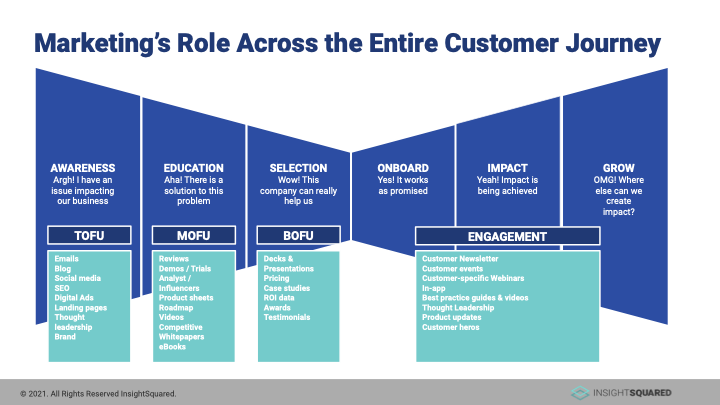Measuring Content ROI: How to Make the Case for a Bigger Budget in 2022 | Webinar Recap

You know your content is crucial to driving revenue but does the rest of your organization? As businesses gear up for 2022, executives are looking to invest in strategies that yield the biggest results and cut funding to the ones that don’t.
Now’s the time to evaluate how content has impacted your bottom line and leverage that data to secure budget for next year.
Last week, we brought together marketing executives Jary Carter, CRO of WordPressVIP, Lindsey Tishgart, CMO of InsightSquared, and Dave Cardiel, VP of Growth Marketing for WordPressVIP and Parse.ly, to learn how they budget for content.
Here are a few of the highlights from our webinar discussing the challenge of measuring content ROI and proving the impact of your content marketing teams’ work:
- How do you expect your marketing budget to shift next year?
- How can we use content to remove friction from our customers’ buying process?
- What are the different roles of marketing and content throughout the customer journey?
- How can customer journey mapping and planning help us secure budget and buy-in for next year?
“As we roll into Q4, as we think about next next year, and so forth, everyone’s got a lot on their plates. I don’t know anybody in any space, whether they’re a brand, whether they’re in media publishing, that’s being asked to slow down as they get into Q4.
“One of the things that always happens in Q4 is that you get into budgeting and planning.”

How do you expect your marketing budget to shift next year?
Lindsey:
“There is quite a bit still being figured out. People are just getting in budgeting season, so the evaluations happening now are about understanding what works. From my perspective, content drives almost everything, so I see us shifting more budget into content.”
“In terms of paid marketing, people are always looking to see what Google’s doing, so I think there are a lot of questions around that.”
“There are also a lot of questions around events and sponsorships after what we’ve seen this past year and a half. I’m talking to a number of CMOs who are earmarking budget just to go to their CFO and say: ‘I need that budget in case it happens.’”
“But they’re going cautiously optimistic. If events do get canceled or they turn virtual, because there’s been a lot of struggle with ROI on virtual events, they’re pulling it back and focusing on other areas.”
Jary:
“I think more dollars will go to events and sponsorships as well. Those have been decimated with the pandemic, so I think people are wanting them to come back.”
“It also makes sense that a lot of people have tried to get really good with paid marketing over the last year and a half. We certainly see ourselves trying to get a lot more efficient and a lot smarter about how we do paid marketing, especially as we try to shift a lot of our dollars away from events.”
“In terms of budgeting for new technologies, this is an area where people don’t always want to spend money, but I think it’s becoming increasingly important as a way to drive forward the strategy that marketers want to achieve.”
“Based on what we’ve been seeing in the market over the last 18 months, however, that seems to be changing. Technology spending on marketing has dramatically increased from from my perspective.”
“We are seeing a big push towards that end with tech stack consolidation and tool fatigue. I think there are technology discussions happening across the board, but it’s gotten bigger than just marketing.”
How can we use content to remove friction from our customers’ buying process?
Jary:
“The customer experience is becoming the only true source of sustainable competitive advantage, and I don’t say that comment lightly.”
“Great companies are not as much competing on price or product as a differentiator, and you see that companies with amazing customer experience can actually command up to a 25% premium, which is is huge.”
“Then you also see other statistics from Gartner and some analysts that say only 30% of customers report being brand loyal anymore. You’ve seen companies like Amazon, Warby Parker, and Bonobos come and really disrupt their industries not on product but on customer experience. Amazon talks about this concept of effortless customer experience.”
“So much of that happens through the concept of journey mapping and mapping the customer journey from how they find your product, how they evaluate your product, how they purchase your product, and then how they adopt, rollout, and use your product throughout their organization.”
“One thing that Lindsay and I talked about, as we were kind of prepping for this, was the idea of looking for, as you go through that journey, the areas of friction and sharing that with your leadership team.”
“Once you understand where there’s friction, where the handoffs aren’t smooth, then you can start creating content to sure up that journey and remove friction in that process.”
“It’s not about just producing a lot of content, it’s about really understanding where the content needs to get sured up in the customer journey and then creating that content for the customer experience at large.”
Lindsey:
“We know that 88% of buyers are engaging with your content before they ever talk to someone at your company or make a decision to purchase, and it gets even harder down the line. People are spending less and less time with sales reps than ever before.”

“That’s why marketing and content play such a big role in their journey. Content that fits their need at the right time is so valuable, helping them learn and make decisions on their own time.”
What are the different roles of marketing and content throughout the customer journey?
Lindsey:
“Marketing is the responsibility, not just of the core team, but of the entire company, and we need to be creating content specifically for the top, middle, and bottom of the marketing funnel.”

“At the top of the funnel, you’re just trying to get those leads in, showing them that you’re a thought leader, you’re an expert in your space, and you want to deliver that value. Give them three things before you ask for one.”
“That middle is essentially when they become a customer or a lead. That’s when you get into that education phase.”
“Something to remember is that the average size of a buying group for B2B companies is growing. Buying groups used to be a couple of people, and now they’re scaling around 20.”
“You’re not just educating that first person that comes in, that requests a demo or answers your e-mail. You’re starting to educate the rest of their team.”
Jary:
“Time is the biggest investment you’re asking of anybody today, whether it’s a sales call, whether it’s a coffee meeting, whether it’s to read an e-mail or watch a video.”
“So the question is: are you making it worth their time? Are you delivering what they’re looking for at the time? Have you updated this content? Does it help them do something?”
“And if it does, they’ll continue to read, and they’ll continue to engage. If it falls flat, or you’re wasting their time, you’ll see that pretty quickly.”
How can customer journey mapping and planning help us secure budget and buy-in for next year?
Jary:
“I think taking your journey mapping as an executive initiative and bringing that into your executive team is really important. This is something that I’m seeing on C-level folks’ minds.”
“Organizing a really collaborative conversation to say, look, our customer experience needs to look like this as we go into 2022. Coming with a thesis or a hypothesis of where you’re actually falling down in the customer journey, and allowing for collaboration around that is critical.”
“It’s such an important initiative that I think most C-level teams are willing to spend time, effort, and energy on.”
“Something else I think most marketing teams need to do is really align on the 2 to 3 things they want to accomplish for their business and focus all their efforts and energies around those things.”
“This is something I see within organizations at large, but definitely within marketing organizations. They take on just way too much. Marketing teams are doing a lot of things, and not a lot of things well, or doing a lot of things, but not taking the time to really understand the impact.”
“Simplify into the 2 to 3 things that you want to get really right, and get complete clarity on how you measure it. Then organize your team around achieving that. People really align around simplicity in how they do their work.”
Check out the rest of the webinar to learn more about measuring the ROI of your content and securing budget for next year, or chat with one of our content analytics experts here at Parse.ly about how we can help.